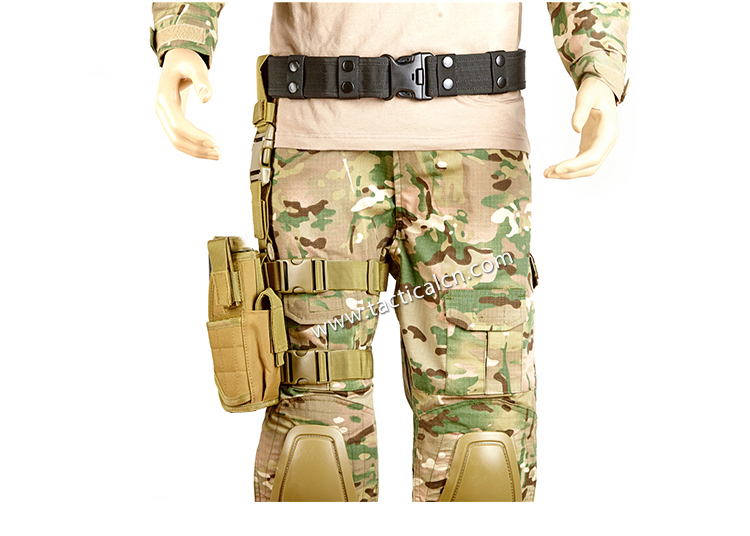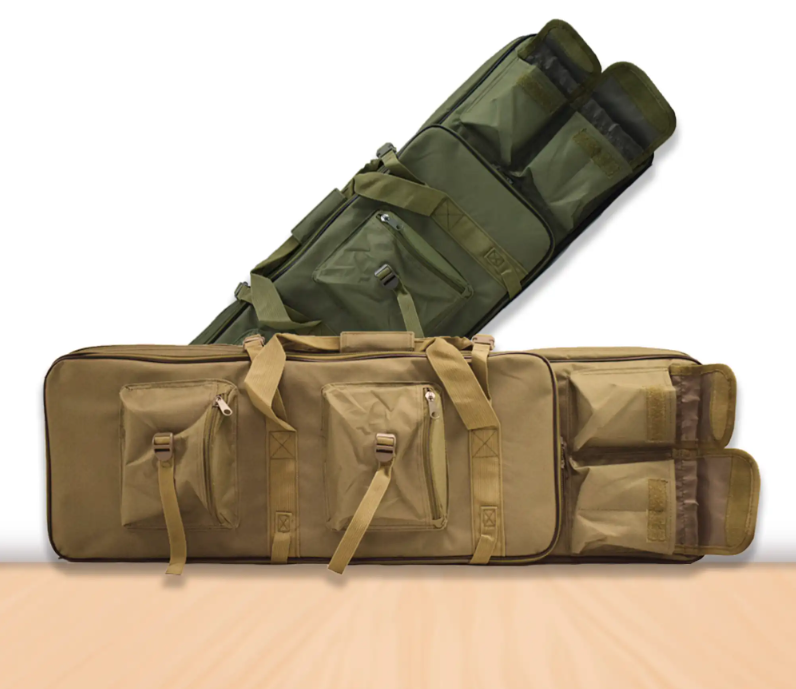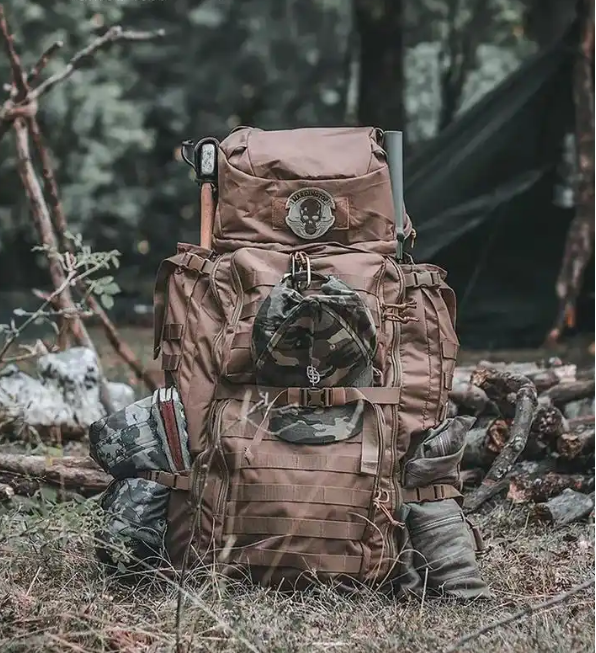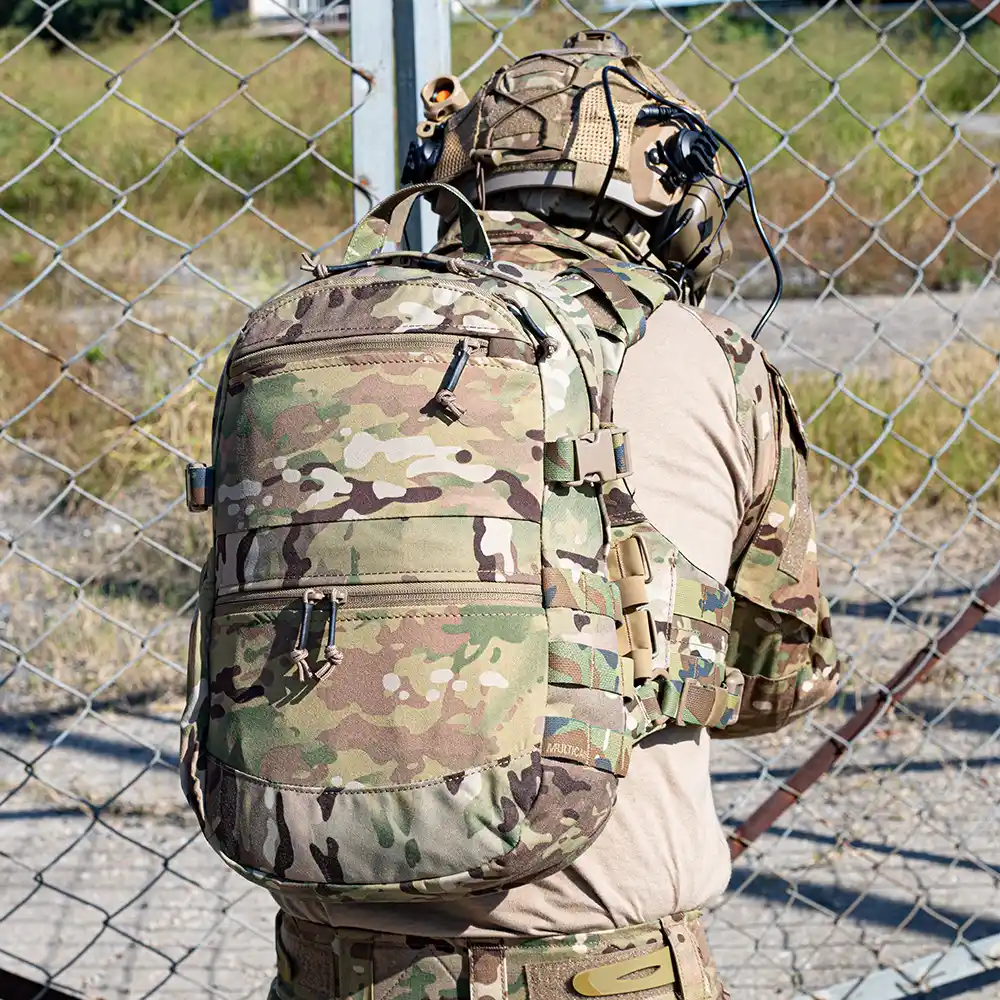A tactical undershirt is much more than an ordinary piece of equipment. It carries the key missions of equipment, protection and communication, and is the second skin when performing missions. The accuracy of size selection is often directly related to the user’s life safety and mobility. A too-small undershirt will compress the chest cavity, affecting breathing and blood circulation, in extreme cases may even exacerbate the risk of injury; a too-large undershirt will be running, lying down, tactical action in the shaking, shifting, hindering the action, and even lead to the protection plate is misplaced, so that the key parts of the loss of protection – this is by no means alarmist, but the reality of the It’s the reality of the heavy price that can be paid.
Core measurements: the cornerstone of accurate measurement
Chest Circumference:
Method: Using a soft tape measure, under normal breathing conditions, circumference around the fullest part of the chest (usually at the level of the nipple), keeping the tape measure horizontal to the body and as loose as you can insert a finger. Do not measure while inhaling deeply!
IMPORTANT: This is the primary basis for selecting an undershirt size (e.g. S, M, L, XL). The body of the undershirt must wrap comfortably around your chest, leaving enough room for undergarments (e.g., winter combat clothing) and protective inserts, while not being too loose to cause swaying.
Torso Length:
Method: Sit or stand up straight. Locate the mid-clavicular notch (upper sternal notch) and measure vertically down to approximately 2.5-5 cm (1-2 inches) above the navel (at the level of the iliac crest). This is the core area to be covered by the back shield (from the clavicle to the lower edge of the ribs).
IMPORTANT: Especially critical for the Plate Carrier. The height of the front and back pieces of the undershirt must provide complete coverage of your critical protective areas (as is standard with SAPI plates). Individuals with long or short torsos need to pay particular attention to whether the undershirt is designed to accommodate their torso length, otherwise the plates may not effectively protect vital organs.
Plate Size (if applicable):
METHODOLOGY: If you already own or plan to purchase a ballistic insert (SAPI, ESAPI, Class III Stand Alone, etc.), it is important to determine the plate size first. Insert sizes are usually based on your chest and torso length measurements.
IMPORTANT: The insert pocket size of the undershirt must be a perfect match for your insert. If the pocket is too small, the insert will not fit; if the pocket is too large, the insert will move, rotate or even slip out of the pocket and will not stay in the correct protective position in critical moments, with disastrous consequences. Please check the size of your insert before choosing an undershirt!
Critical fitting and dynamic evaluation
Even if the measurements are perfect, trying on (or mock fitting) and simulating real-life movements is an essential part of ensuring the right size:
Base Fit:
Put on the base layer of clothing you will most often wear on mission (e.g., T-shirt, fleece) and the outer layer that you expect to be paired with it (e.g., combat fatigues jacket).
Put the undershirt on correctly and fasten all main fasteners (shoulder straps, waistband/side gaiters).
STATIC FEEL: The undershirt should fit close to the body with no noticeable compression (especially in the armpits, shoulders, and neck), nor should it be loose. The main part should cover the core torso. The front and back pieces should be roughly level and not lean forward or backward.
Dynamic movement test: This is the most important part of the fitting!
ARM MOVEMENT: Repeatedly perform a gun raising and aiming motion (simulating a long gun and pistol shooting position), and a large arm swinging motion. Check that the shoulder straps do not rub excessively on the neck and that the undershirt is not pulled up too much with the arms raised, causing the hem to come away from the body.
Torso Activity:
Bending/Stooping: Simulate picking up objects or looking down. Check that the undershirt does not overly squeeze the chest or abdomen and that the back piece does not rise up too far exposing the back waist.
Turning/Twisting: Simulates observation of side-to-side rear or tactical movement. Check that the undershirt does not severely impede rotation and that the side girth is not too tight or too loose.
Deep Squat/Kneel/Crawl: Simulates multiple tactical positions. Check that the undershirt is not shifted too far, that the hem is not catching on the thighs or impeding movement, and that the front piece is not hitting the chin.
Load Simulation: Mount as many of the typical loads you plan to carry (magazine pouches, medical kits, communications equipment, water pouches, etc.) onto the undershirt as possible and test the above maneuvers. Weight loading will significantly change the center of gravity and fit of the undershirt. Feel the stability (does it wobble or sag badly) and comfort (is the shoulder and waist pressure tolerable) of the undershirt under load.
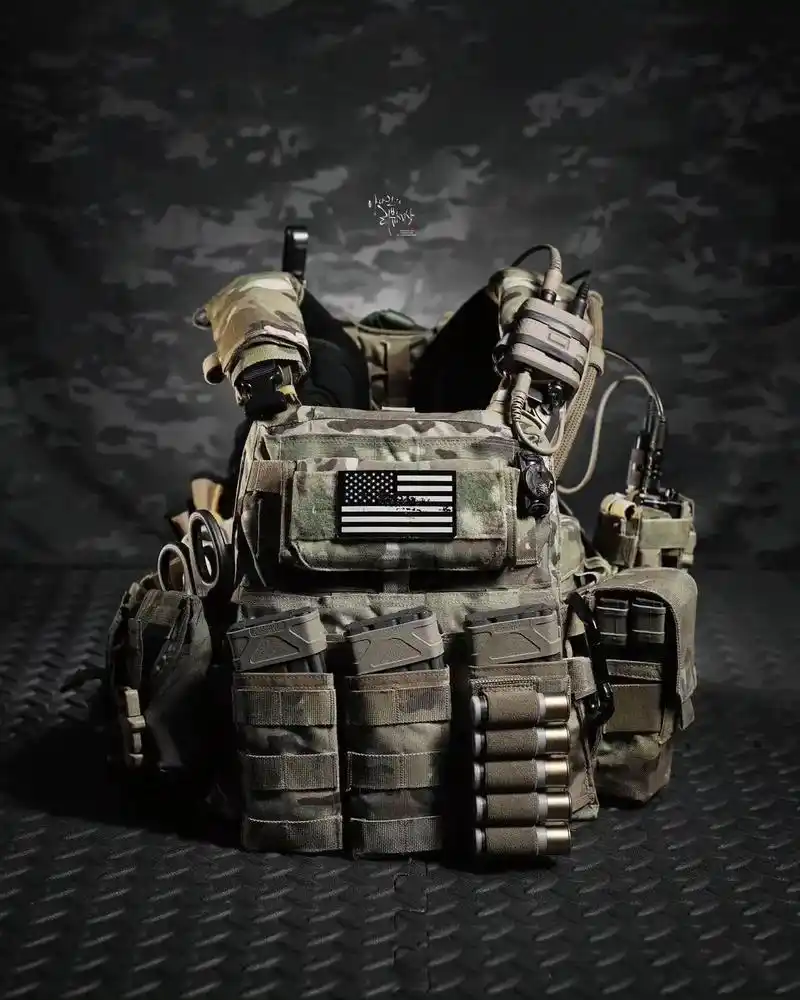
Special Considerations
Body Type Characteristics:
STRONG/BROAD-SHOULDERED: It may be necessary to choose an undershirt that is one size larger or specifically designed for a strong body type (e.g., Crye Precision’s “JPC 2.0” is available in both standard and wide versions) or the shoulder straps and side girth will be too tight. Focus on testing for shoulder and underarm comfort.
Special Body Types: If standard sizing is difficult to accommodate (e.g., unusually long/short torso), be sure to look for brands that offer customization or a more elaborate sizing system (e.g., First Spear, Arbor Arms), or opt for a modular design with an extremely wide range of adjustability (e.g., Mayflower’s APC).
Wear scenarios and seasons:
Thickness of clothing worn underneath: If you need to wear a heavy layer of warmth in cold conditions, size up your undershirt accordingly. If you operate mainly in hot climates with light clothing, consider the fit of the undershirt in its “light state” and avoid oversizing.
Primary mission type: Long patrols require a greater emphasis on load comfort and heat dissipation; CQB (Close Quarter Battle) requires a more compact, snug fit. The nature of the mission will affect your judgment of the “best fit”.
Brand differences and adjustment systems:
Sizing inconsistencies: The actual S/M/L size of undershirts can vary greatly from brand to brand, and even from model to model within the same brand! Be sure to check the official size chart of the specific product and use the measurement guide provided by the product, and do not make an empirical choice based on “Size S” or “Size M” alone.
Adjustment range:
Shoulder Straps: Most undershirts have adjustable length shoulder straps, which are key to fine-tuning the height and fit of the undershirt. Make sure the adjustment range meets your needs.
Waistband/Side Circumference: This is the centerpiece of the undershirt’s circumference adjustment, preventing sway and sag. A good side girth adjustment system (such as Velcro + Fastex snaps, or First Spear’s Tubes) offers a very wide range of adjustment and is a great tool for accommodating different body types and dress thicknesses. Be sure to test them for stability and comfort within the adjustment range.
Practical Advice and Summary
Prioritize the size of the protective insert: If you need protection, this is the starting point for choosing a Plate Carrier.
Data is the basis, fitting is the key: No amount of accurate measurements can replace trying on and testing in motion. If you can’t try them on in a physical store, be sure to choose a store that offers detailed sizing charts, measurement guides, and a good return policy.
“Dynamic fit” is better than “static tightness”: the undershirt may feel slightly loose at rest, but an optimal fit after dynamic testing and weight bearing is ideal. A “tight” choice that sacrifices too much room for movement is often the wrong choice.
Utilize Adjustment Systems: Purchasing an undershirt with excellent shoulder strap and side girth adjustment systems will greatly increase adaptability to different body types and wearing scenarios, and extend the life of the undershirt.
SEEK PROFESSIONAL ADVICE: If possible, consult with experienced peers, instructors or specialty gear retailers. Their experience can be a valuable reference.
Go Bigger, Not Smaller: When hesitating at the sizing threshold, a little looseness is usually easier to improve by adjusting the system to tighten or adding padding than too tightness, whereas an undershirt that’s too small leaves little room for redress and is more detrimental to comfort and safety.
Choosing an accurately sized tactical undershirt is the most basic requirement for your safety and mission effectiveness. It’s not simply a matter of “buying a suit,” but an important decision about your freedom of movement and protection in critical situations. Take the time to take accurate measurements and rigorous testing to ensure that your second skin is truly a reliable barrier and force multiplier, not a shackle on the move.
With straps that fasten and an undershirt that fits snugly, the difference in size can be the difference between life and death when it counts.
IV. Advances in Materials and Ergonomics
Modern backpacks use high-strength materials such as Cordura nylon (tear-resistant) and ballistic nylon (puncture-resistant), and have introduced designs such as ventilated back panels and adjustable hip belts to transfer weight from the shoulders to the waist and reduce fatigue.513 For example, the ILBE backpack designed by Beginning Bird is supported by an internal frame, which allows the pack to remain balanced even if it is loaded with a weight of 120 pounds (about 54 kg)
这是测试文本,单击 “编辑” 按钮更改此文本。


